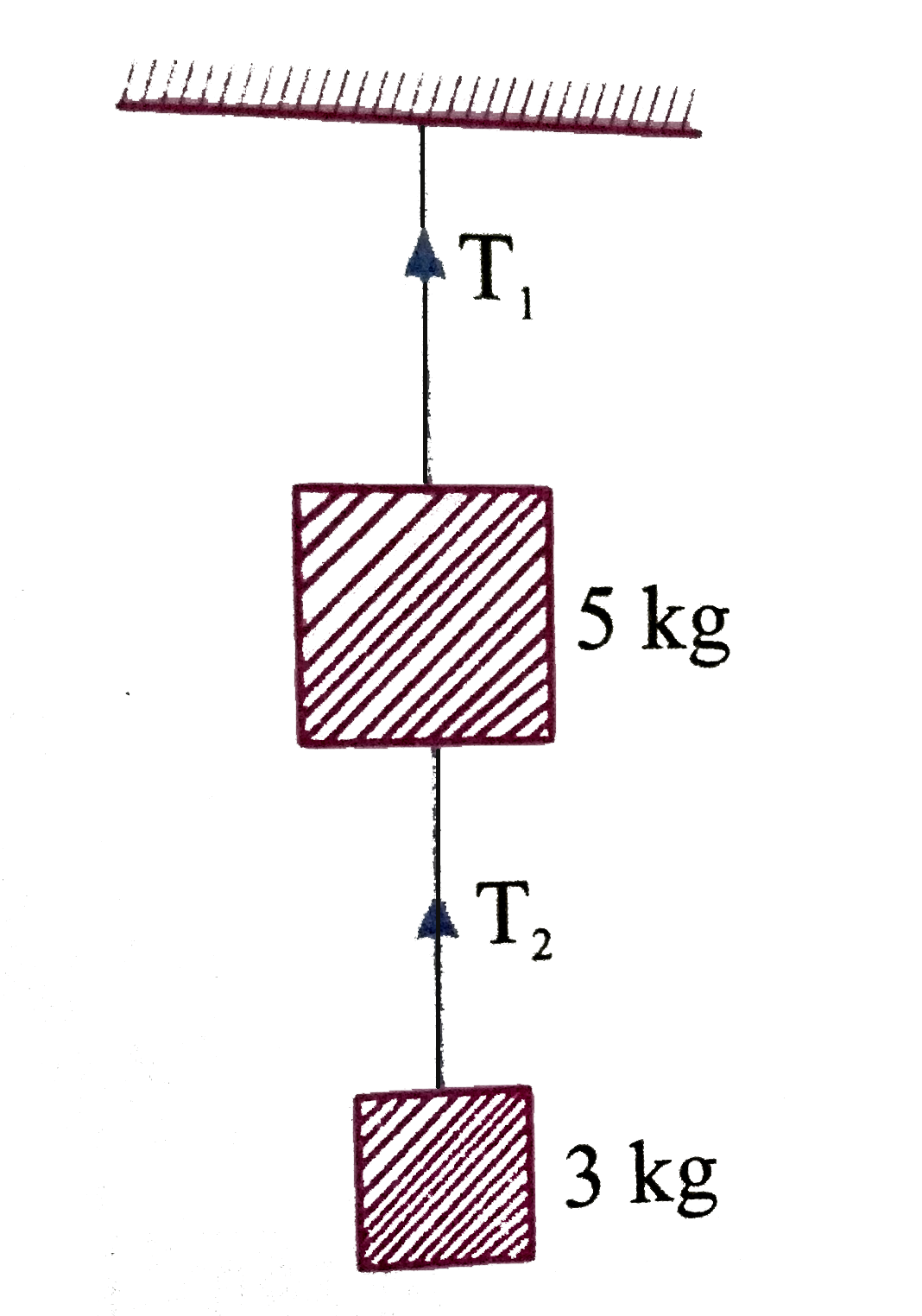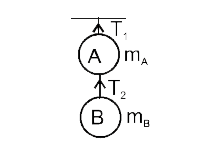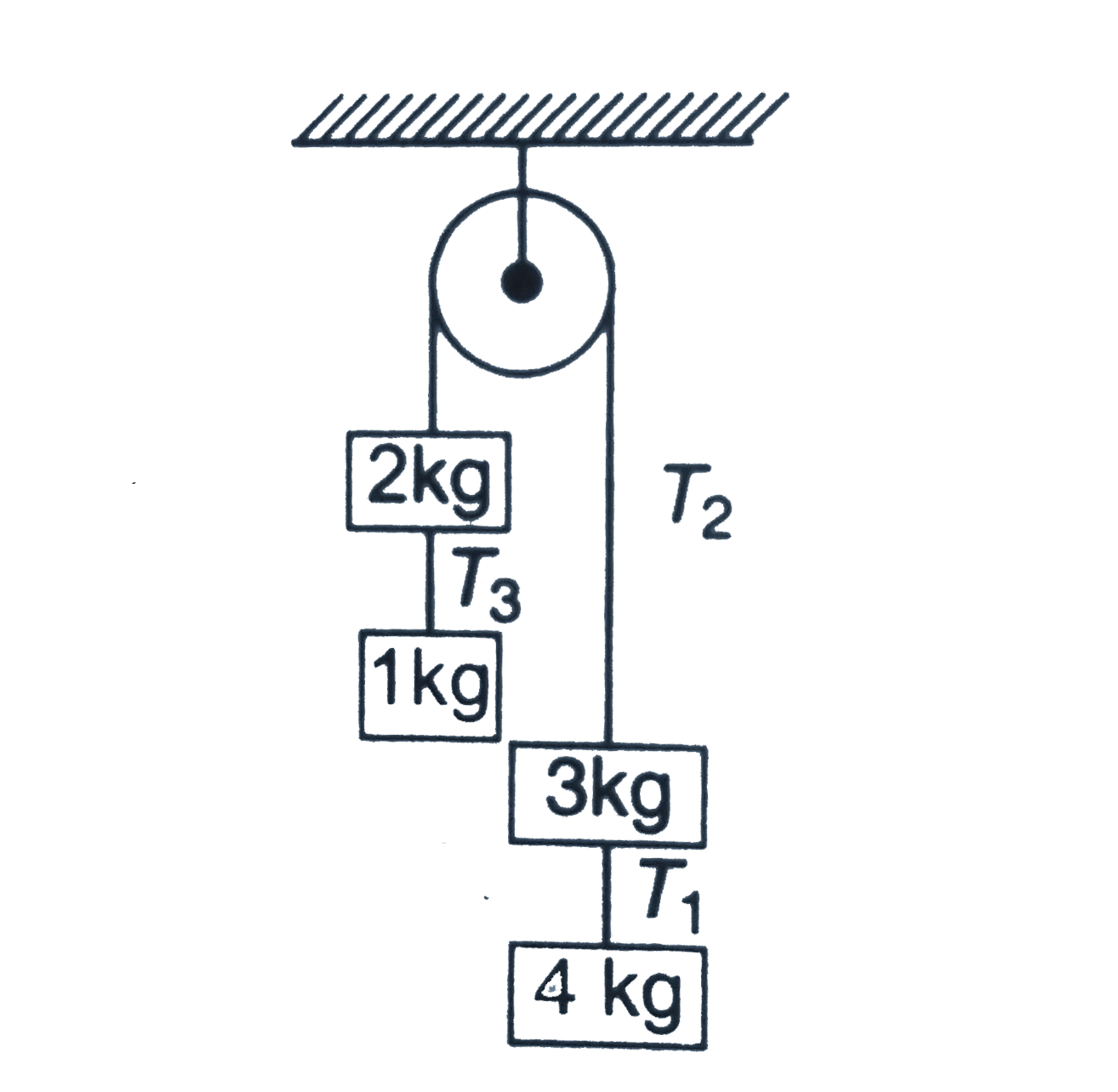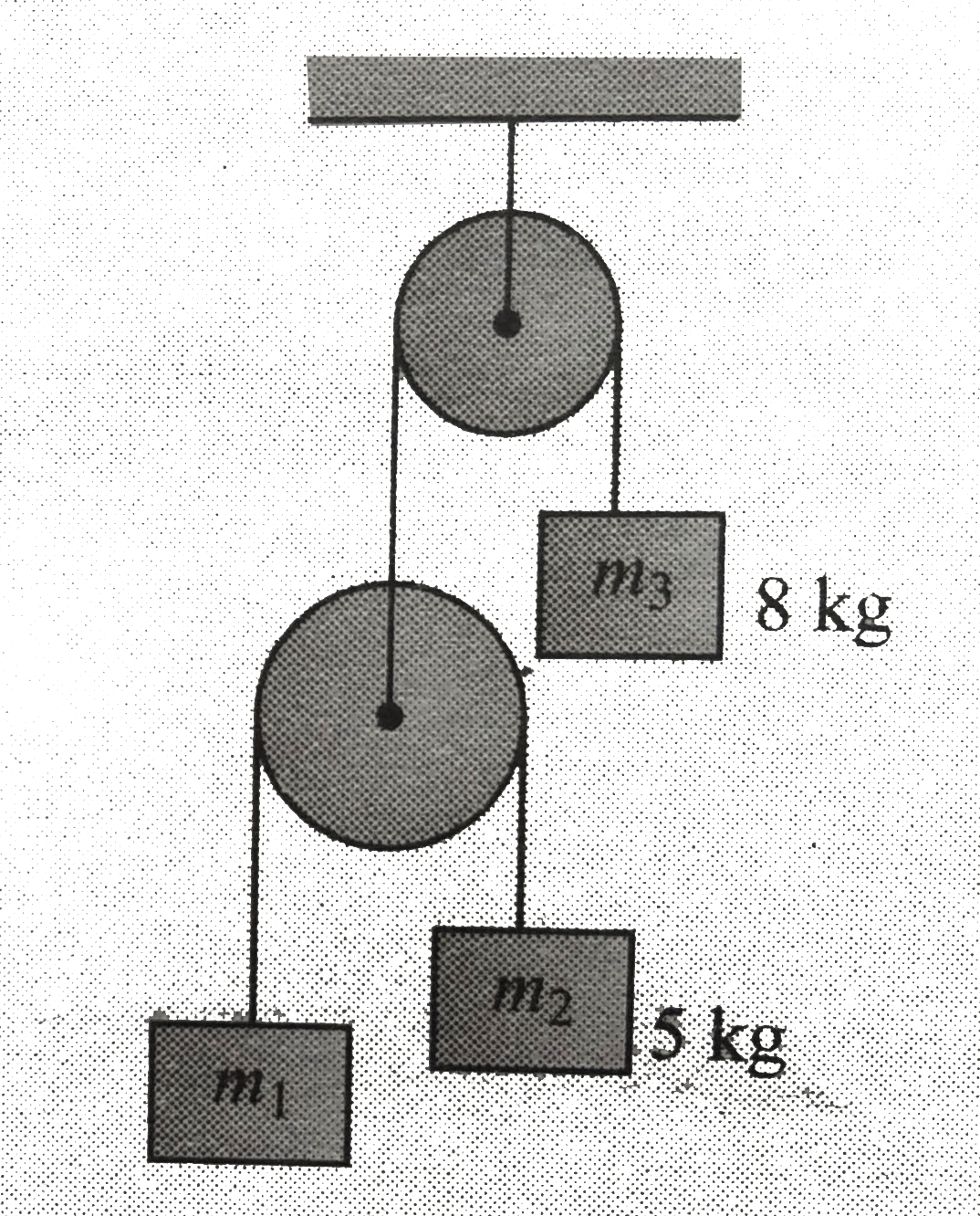The masses m1m2 and m3 of the three bodies shown in fig . Are 5 , 2 and 3 kg respectively Calculate the valuse of tension T1T2 and T3 when (i) the whole system is going upward with an acceleration of 2m/s2 (ii) the whole system is stationary (g=9.8m/s2) .
 .
.
All the three bodies are moving together with an an upward acc . Of 2m/s2 The force pulling the system upwards is T1 and downward pull of gravity is
(m1+m3)g
According to Newton s 2 nd law of motion
T1−(m1+m2+m3)g=(m1+m3)a
or T1=(m1+m2+m3)(a+g)
=(5+2+3)(2+9.8)=118N
Similarly , for motion of m2 and m3 ., we write
T2=(m2+m3(a+g)=(2+3)(2+9.8)
=590N
and for motion of m3
T3=m3(a+g)=3(2+9.8)=35.4N
(ii) When the whole system is stationary
a=0
Using the same equations as above with a = 0 ,
T1=(m1+m2+m3)g=10×9.8=98N
T2=(m2+m3)g=5×9.8=49N
T3=m3×g=3×9.8=29.4N
Topper's Solved these Questions
- BOOK - PRADEEPCHAPTER - LAWS OF MOTIONEXERCISE - conceptual problmes45videos
LAWS OF MOTION
- BOOK - PRADEEPCHAPTER - LAWS OF MOTIONEXERCISE - Very short answer questions73videos
LAWS OF MOTION
- BOOK - PRADEEPCHAPTER - LAWS OF MOTIONEXERCISE - Assertion- Reason Type Questions17videos
LAWS OF MOTION
- BOOK - PRADEEPCHAPTER - KINEMATICSEXERCISE - 1 NCERT Comprehension4videos
KINEMATICS
- BOOK - PRADEEPCHAPTER - MATHEMATICAL TOOLSEXERCISE - Fill in the blanks5videos
MATHEMATICAL TOOLS
Similar Questions
Two masses of 5kg and 3kg are suspended with help of massless inextensible strings as shown in figure. Calculate T1and T2 when whole system is going upwards with acceleration =2m/s2(useg=9.8ms−2).
 View Solution
View SolutionThe masses m1m2 and m3 of the three bodies shown in fig . Are 5 , 2 and 3 kg respectively Calculate the valuse of tension T1T2 and T3 when (i) the whole system is going upward with an acceleration of 2m/s2 (ii) the whole system is stationary (g=9.8m/s2) .
 . View Solution
. View Solution
Knowledge Check
- Question 1 - Select One
Two masses of 5kg and 3kg are suspended with help of massless inextensible strings as shown in figure. Calculate T1and T2 when whole system is going upwards with acceleration =2m/s2(useg=9.8ms−2).
 AT1=50N,T2=38NBT1=35.4N,T2=94.4NCT1=94.4N,T2=35.4NDT1=0N,T2=35.4N
AT1=50N,T2=38NBT1=35.4N,T2=94.4NCT1=94.4N,T2=35.4NDT1=0N,T2=35.4N - Question 2 - Select One
A lift of mass 100 kg is moving upwards with an acceleration of 1 m/s2. The tension developed in the string, which is connected to lift is (g=9.8m/s2)
A980 NB1080 NC1100 ND1000 N - Question 3 - Select One
Two objects A and B of masses mA and mB are attached by strings as shown in fig. If they are given upward acceleration then the rato of tension T1:T2 is-
 A(mA+mB)/mBB(mA+mB)/mACmA+mBmA−mBDmA−mBmA+mB
A(mA+mB)/mBB(mA+mB)/mACmA+mBmA−mBDmA−mBmA+mB
Two masses of 5 kg and 3 kg are suspended with help of mass less inextensible string as shown. Calculate T1andT2 when system is going upwards with acceleration m/s2.(Use g=9.8m/s2).
 View Solution
View SolutionIn the figure shown, find acceleration of the system and tenslons T1,T2andT3(Take=10m/s2)
 View Solution
View SolutionThree blocks m1,m2, and m3 are arranged as shown in fig. if m2=5kg and m3=8kg, at what value of m1 will 8kg mass be at rest?
 View Solution
View SolutionTwo masses m1 and m2 are accelerated uniformly on a frictionless surface as shown in figure given below. The ratio of the tensions T1T2 is:
 View Solution
View SolutionThe mass of a lift is 500 kg. What will be the tension in its cable when it is going up with an acceleration of 2.0 m/s2 ? (Take, g = 9.8 m/s2)
View Solution
